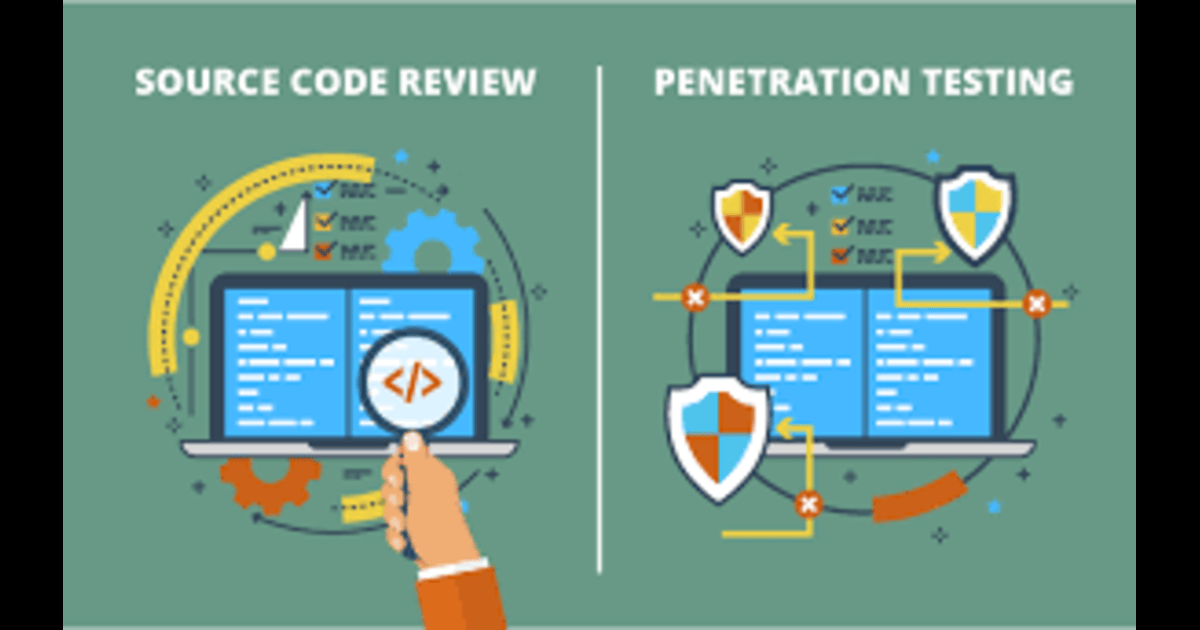🔍 How Secure Code Review Helps Pentesters ?
Secure Code Review is not just a defensive practice—it’s a strategic advantage for penetration testers. By analyzing source code directly, pentesters can uncover hidden vulnerabilities, understand the underlying logic, and dramatically reduce false positives commonly encountered during black-box or dynamic testing. 📑 Table of Contents 🧠 What is Secure Code Review? Secure Code Review is…
Secure Code Review is not just a defensive practice—it’s a strategic advantage for penetration testers. By analyzing source code directly, pentesters can uncover hidden vulnerabilities, understand the underlying logic, and dramatically reduce false positives commonly encountered during black-box or dynamic testing.
📑 Table of Contents
- What is Secure Code Review?
- Why Pentesters Should Care
- Benefits of Secure Code Review
- Manual vs Automated Code Review
- Code Review Methodologies
- 5.1 OWASP Code Review Guide
- 5.2 STRIDE, DREAD, and other Models
- Understanding Code Flow
- Common Vulnerabilities Identified
- Checklist for Secure Code Review
- Top Tools for Secure Code Review
- Best Practices for Pentesters
- Conclusion
- Resources and Further Reading
🧠 What is Secure Code Review?
Secure Code Review is the process of analyzing source code to detect security flaws before the application is deployed. Unlike traditional testing, this approach offers white-box visibility, enabling a much deeper inspection of potential risks and logic errors.
🎯 Why Pentesters Should Care
As a pentester, code review:
- Reveals hidden backdoors or logic bombs
- Clarifies code-level input validation and sanitization
- Helps distinguish real vulnerabilities from false positives
- Complements dynamic analysis for hybrid assessments
Understanding the code empowers offensive testers to craft more targeted and effective attacks.
✅ Benefits of Secure Code Review
| Benefit | Description |
|---|---|
| 🎯 Accuracy | Reduces reliance on guesswork and false alarms |
| 🧭 Flow Visibility | Understands app behavior from the inside |
| 🛡️ Early Detection | Finds bugs before exploitation is possible |
| ⚖️ Prioritization | Ranks issues by risk and exploitability |
| 🔧 Precision Exploits | Enables custom payload development |
⚖️ Manual vs Automated Code Review
| Approach | Pros | Cons |
|---|---|---|
| 🔍 Manual Review | Deep logic analysis, flexible, context-aware | Time-consuming, requires expertise |
| 🤖 Automated Scanning | Fast, scalable, identifies patterns | High false positive rate, limited logic understanding |
➡️ Recommendation: Combine both for a comprehensive assessment.
🧱 Code Review Methodologies
🔗 OWASP Code Review Guide
A well-established resource providing:
- Review checklists
- Secure coding principles
- Language-specific guidance
🧩 Threat Modeling with STRIDE
Used to understand threat categories in each code module:
- Spoofing
- Tampering
- Repudiation
- Information Disclosure
- Denial of Service
- Elevation of Privilege
🔄 Understanding Code Flow
Code flow understanding helps identify:
- Entry Points (e.g., web routes, API controllers)
- Data Flow from input to sinks
- Trust Boundaries
- Authentication/Authorization decisions
- Critical Business Logic vulnerable to bypass
🔁 Review how user input is handled across:
- Controllers
- Services
- Models/ORMs
- Helpers or utils
- Output (rendering or response)
🔥 Common Vulnerabilities Identified
| Vulnerability | Description |
|---|---|
| 💉 SQL Injection | Improper input sanitization in DB queries |
| 🗂️ IDOR | Poor access control for object references |
| 🧵 Command Injection | Unsafe use of OS-level commands |
| 🛡️ Broken Auth | Hardcoded credentials, insecure session handling |
| 📬 SSRF | Server-side request to untrusted user input |
| 🧬 Deserialization | Unsafe parsing of serialized objects |
📋 Checklist for Secure Code Review
- Input validation/sanitization
- Authentication logic
- Role-based access control
- Error handling/logging
- Use of cryptographic functions
- Dependency and third-party usage
- Secure session and token handling
- Data storage practices (e.g., password hashing)
- Business logic enforcement
🛠️ Top Tools for Secure Code Review
| Tool | Description |
|---|---|
| 🔎 Semgrep | Rule-based static analysis |
| 🧠 CodeQL | Semantic code queries |
| 🛡️ SonarQube | Continuous code inspection |
| 🧬 Bandit | Python-specific SAST |
| 🔍 Brakeman | Ruby on Rails code review |
🧭 Best Practices for Pentesters
- 🎯 Focus on high-impact areas: auth, input, file handling, crypto
- 🔍 Trace data flows from input to sink
- 🧠 Understand the business logic behind decisions
- ⚙️ Validate findings with runtime testing if possible
- 📚 Maintain a custom checklist per tech stack
🏁 Conclusion
Secure Code Review is a crucial complement to offensive security assessments. It not only empowers pentesters to sharpen their understanding of code behavior but also helps pinpoint real risks while reducing noise. By blending static analysis, manual inspection, and testing, security professionals gain clarity and accuracy that tools alone can’t deliver.
📚 Resources and Further Reading
- 📘 OWASP Code Review Guide
- 🔬 CodeQL for Security Researchers
- 🛠️ Secure Coding Best Practices
- 📦 Common Static Analysis Tools
✨ You may also enjoy
- 🧠 Threat Modeling Techniques – To better understand code threats
- 🧪 Building Exploits from Source – Learn offensive tactics from code review
- 🎯 Bug Bounty Reports with Code Insights – Real-world case studies


